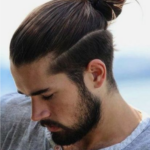Vikings were known for their distinctive hairstyles, which varied depending on their social status, gender, and region. If you’re looking for Viking-inspired hairstyles for a baby boy.
Here are a few options:
- Shaved Sides and Long Top :
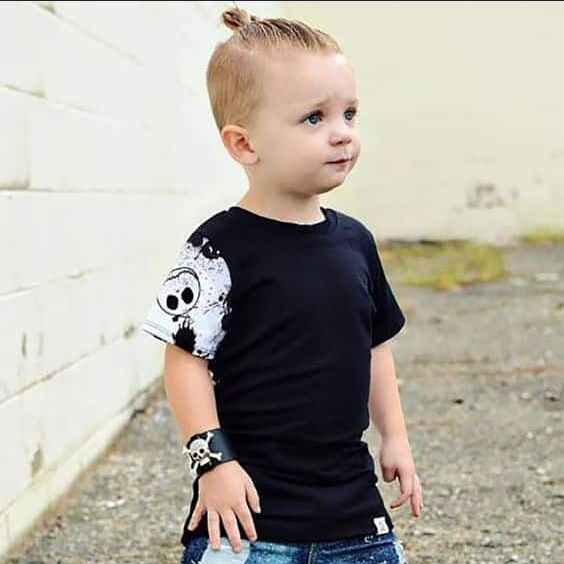
This is a classic Viking-inspired hairstyle that features shaved sides and a long top. The hair on top can be styled in a variety of ways, such as a messy bun or a braid.
- Braided Hair :
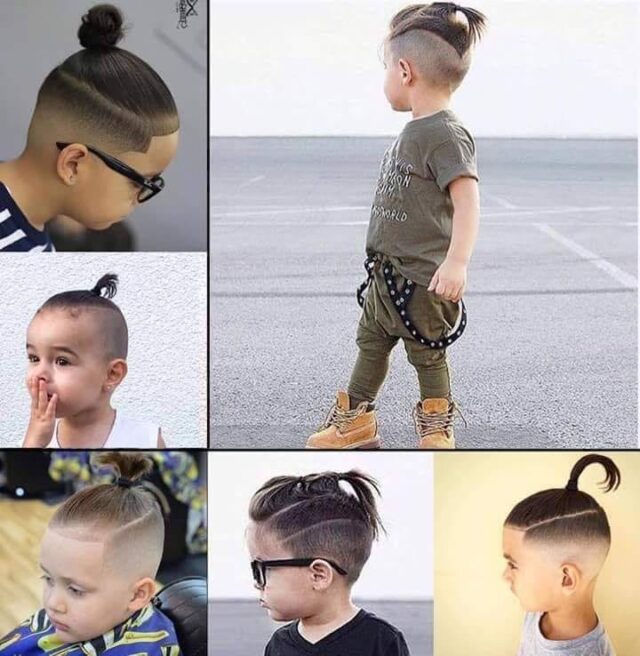
Braids were a common hairstyle among Viking men, and you can incorporate them into your baby boy’s hair by braiding a small section on one side or both sides.
- Top Knot :
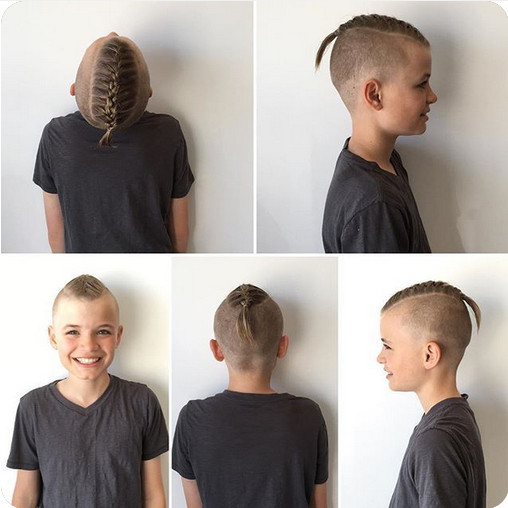
A top knot is another popular Viking hairstyle that involves tying the hair on top of the head into a knot. This can be done with shorter hair or with a longer top and shaved sides.
- Faux Hawk :
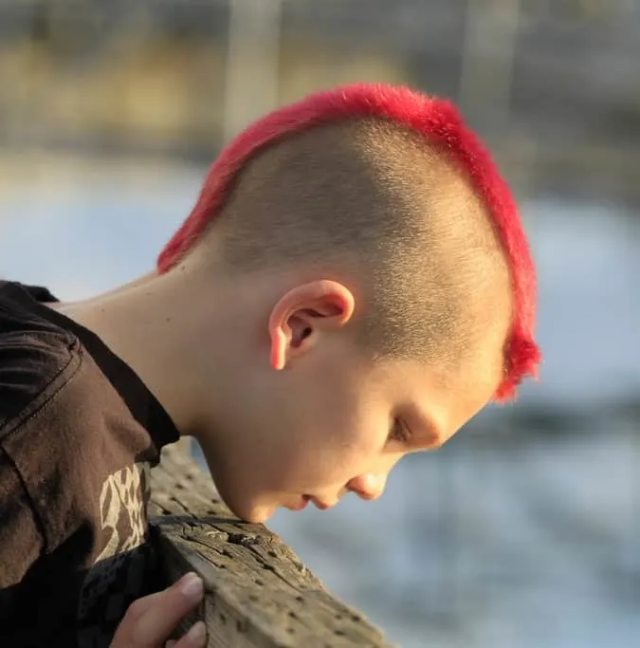
A faux hawk is a modern take on the classic Viking hairstyle. This involves shaving the sides and leaving a strip of longer hair on top that can be styled into a point or spike.
- Buzz Cut with a Beard :
For a simpler Viking-inspired look, you can give your baby boy a buzz cut and grow out a beard. This will create a rugged, masculine look that is reminiscent of Viking warriors.
It’s important to keep in mind that some of these hairstyles may not be suitable for very young babies who have not yet developed a full head of hair. Additionally, always prioritize your child’s comfort and safety when styling their hair.
How can I thicken my toddler’s hair?
It’s common for toddlers to have thin hair, and it’s usually nothing to worry about. However, if you’re looking to thicken your toddler’s hair, here are a few tips:
Healthy Diet: A balanced and nutritious diet is essential for healthy hair growth. Make sure your toddler is getting enough protein, vitamins, and minerals from foods like eggs, fish, fruits, vegetables, and whole grains.
Gentle Hair Care: Avoid using harsh shampoos and conditioners on your toddler’s hair. Use a mild, sulfate-free shampoo and conditioner that is specifically designed for children.
Avoid Heat Styling: Avoid using heat-styling tools like blow dryers, flat irons, and curling irons on your toddler’s hair. Heat can damage the hair and lead to breakage.
Scalp Massage: Regular scalp massages can stimulate blood flow to the scalp and promote hair growth. Use your fingers to gently massage your toddler’s scalp for a few minutes each day.
Natural Oils: Natural oils like coconut oil, olive oil, and jojoba oil can help moisturize and nourish your toddler’s hair. Apply a small amount of oil to your toddler’s hair and scalp before bedtime, and wash it out in the morning.
Patience: Remember that hair growth takes time, and there is no quick fix for thickening your toddler’s hair. Be patient and consistent with your hair care routine, and your toddler’s hair will eventually grow thicker and healthier over time.
If you’re still concerned about your toddler’s hair growth, it’s always a good idea to consult with your pediatrician or a dermatologist for further advice.
Does cutting a toddler’s hair help it grow?
No, cutting a toddler’s hair does not directly affect its growth rate. Hair growth is determined by factors like genetics, nutrition, and overall health. Hair growth occurs from the hair follicle beneath the skin, and cutting the hair does not affect the rate at which it grows.
However, regular haircuts can help keep your toddler’s hair healthy and prevent split ends and breakage. When hair is not trimmed regularly, split ends can travel up the hair shaft, leading to breakage and hair loss. By cutting the hair regularly, you can remove split ends and prevent further damage, which can make the hair appear healthier and fuller.
Additionally, regular haircuts can help maintain the shape and style of your toddler’s hair, which can make it look neater and more polished. So while cutting a toddler’s hair doesn’t directly affect its growth, it can help keep it healthy and looking its best.
When should my toddler get her first haircut?
The timing of a toddler’s first haircut can vary depending on factors like hair length, texture, and style preference. Some children may not need a haircut until they are two or three years old, while others may need one sooner.
As a general guideline, most children will likely need their first haircut between 12 and 18 months of age. This is around the time when their hair may start to get longer and thicker, and it can start to get in their eyes or tangle easily. However, if your child has very fine or slow-growing hair, they may not need a haircut until they are two or three years old.
Ultimately, the decision to get your toddler’s first haircut is up to you and your personal preference. Some parents prefer to wait until their child is a bit older and can sit still for longer periods of time, while others prefer to get it done earlier to avoid any discomfort or frustration caused by long hair.
If you do decide to get your toddler’s first haircut, make sure to choose a professional stylist who is experienced with cutting children’s hair. It’s also a good idea to bring along some distractions, like toys or snacks, to help keep your child calm and comfortable during the process.
How can I increase my toddler’s hair growth?
Hair growth in toddlers is determined by a variety of factors, including genetics, nutrition, and overall health. While there is no guaranteed way to increase hair growth in toddlers, here are some tips that may help:
Balanced Diet: Ensure that your toddler is getting a balanced and nutritious diet with plenty of protein, vitamins, and minerals that promote hair growth. Foods like eggs, fish, fruits, vegetables, and whole grains can help provide the necessary nutrients.
Gentle Hair Care: Use a mild, sulfate-free shampoo and conditioner specifically designed for children to avoid damage to the hair. Avoid using harsh chemicals, hot tools, or tight hairstyles that can damage the hair and hinder growth.
Scalp Massage: Gently massaging the toddler’s scalp can help stimulate blood flow to the hair follicles and promote hair growth. Use your fingers to gently massage the scalp for a few minutes each day.
Natural Oils: Natural oils like coconut oil, olive oil, and jojoba oil can help nourish and moisturize the hair. Apply a small amount of oil to the toddler’s hair and scalp before bedtime, and wash it out in the morning.
Regular Trimming: Regular haircuts can help prevent split ends, breakage, and hair loss. Trimming the hair every few months can help keep it healthy and encourage growth.
Patience: It’s important to be patient, as hair growth takes time. Toddlers’ hair can grow at different rates and may take longer to grow than adult hair. It’s normal for toddlers to have thin or slow-growing hair, and it may take time to see significant changes.
If you are concerned about your toddler’s hair growth or have any questions, it’s always a good idea to consult with your pediatrician or a dermatologist for further advice.

